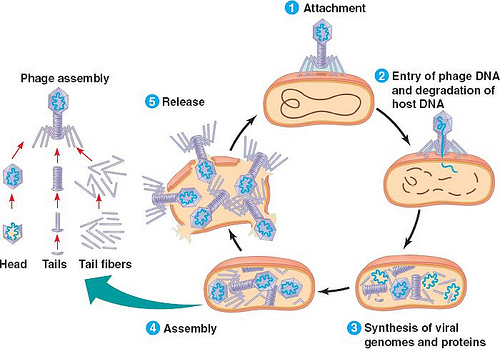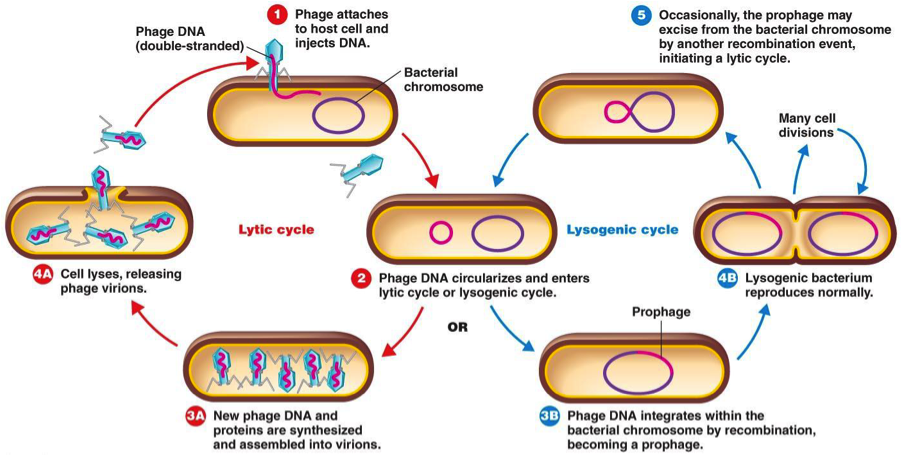What are the differences between a lytic infection and a lysogenic infection?
1 Answer
Lytic- active, lysogenic- dormant.
Explanation:
Some viruses(i'll stress here Herpes viruses) can undergo 2 life cycles; lysogenic and lytic cycle. Now, let us look at the lytic cycle first.
1. Lytic Cycle
In one hand, the lytic cycle is a mode of viral reproduction wherein the goal is to produce virions and as a result, the lysis of the host cell.
Viruses do not have structures that can support self-reproduction. Hence, they use the host cell's structures to help the virus replicate itself.
Recall that viruses infect host cells by injecting their genetic material to the host's DNA. The DNA encodes what the cell should produce. And because the virus inserted its genetic material in the host cell's DNA,the virus now influences the host cell's behavior in regards to the synthesis of materials; the host cell now produces copies of the virus.

After synthesis, Assembly of the viruses happen. Materials synthesized by the host cell are now gathered to form new viruses. After assembly is complete the virus now releases itself to infect new cells, destroying(lysis) the host cell..
On the other hand, the lysogenic cycle is pretty much the same, except the cycle stops in the insertion of the virus' genetic material in the host DNA. It stays "DORMANT". That is, it stays completely inactive in the host cell.
If the host cell divides, the viral genome is also copied, therefore replicating itself without exerting much effort and exhibiting dormancy.

The lysogenic cycle can also shift to the lytic cycle. This is evident in viruses that lie dormant for years and then attacks whenever the host's immune system is suppressed or compromised.
Here's the comparison of both lysogenic and lytic cycle.

The prophage is the viral genetic material.

